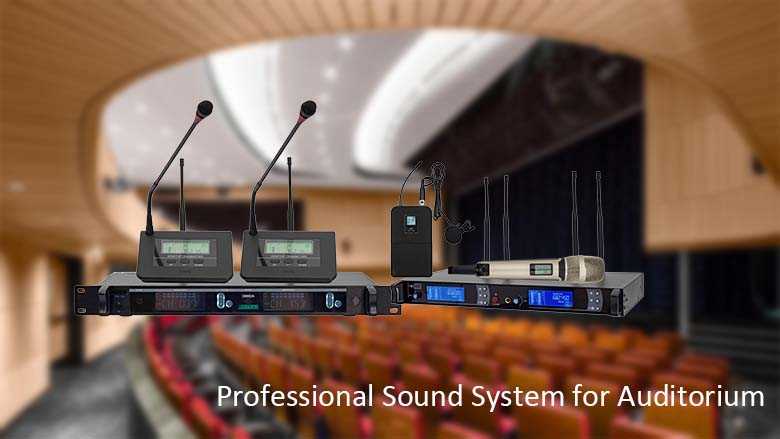The landscape of audio technology is always evolving and that is why network audio solutions have emerged as a reformative force. These devices have revolutionized the way we transmit, disseminate and manage audio content across different spaces.
Seeing that these solutions are very essential for auditory content transmission, distribution and management, it is important that people have at least a basic understanding of them and how they affect our auditory experiences in different settings. You can visit https://www.aes.org/ for some historical facts about sound engineering.
In this article, we will explore the intricacies of these solutions, their applications and benefits amongst other basic information so stay with us.
Understanding Network Audio Solutions
Sound systems use digital networks to transmit, distribute and manage audio signals. These solutions capitalize on the strength of network infrastructure for flexible and efficient auditory communication.
Key Features
These systems most commonly comprise of features such as sources of sound, control interfaces, networked auditory and signal processors. These features work together to create an interconnected audio ecosystem that operates seamlessly.
Audio-over-IP (AoIP) Protocols
Audio-over-IP protocols are central to these innovations and enable the transmission of high-quality auditory data over standard Ethernet networks. Some of the popular protocols include AVB, AES67and Dante and they all have unique selling points to offer in terms of low latency, scalability, and interoperability.
Applications of Network Audio Solutions

There are many settings in which these sound systems are used, and we will look at some of them below: –
Professional Audio Systems
This innovation is now an intrinsic part of professional setups that require sound. These setups include music or film recordings, concerts and broadcast events or facilities. Efficient routing of audio signals is facilitated by AoIP protocols in addition to the simplification of complex setups and enhancement of the overall sound quality.
Corporate Environments
Corporate settings also use these solutions for presentations, conferencing, and background music. Click here to see the effects and benefits of background music. They enable the centralization of sound and the seamless integration of AV systems. They also provide the flexibility for systems to adapt to requirements as they change/evolve.
Public Spaces and Venues
Public spaces such as airports, shopping malls and stadiums need amplification of sound for seamless communication which makes for efficient operations. That is why these systems are used for amplification of emergency alerts, background music and announcements. The beauty of these systems is that they can be scaled to meet the specific needs of any space and still maintain the same quality no matter how large the space is.
Educational Institutions
Institutions of learning come in varied sizes and spaces and these solutions are needed for proper and effective communication. Places such as auditoriums, classrooms and lecture theatres require these solutions for efficient distribution of sound, interactive learning, and live broadcasting.
Benefits of Network Audio Solutions
From all that we have discussed above, you can deduce that these devices or innovation are beneficial to many activities whether commercial or otherwise. However, we will clearly spell out some of these benefits below: –
Scalability and Flexibility
These interfaces offer scalability which means that the systems can be easily expanded or reconfigured to adapt to the current need of the user. For example, when using BlueBridge® network audio solutions or similar brands, you can rest assured that the system can scale. They are flexible enough to adapt to the unique and changing requirements of different settings.
Centralized Control and Management
One of the features of these auditory interfaces that make them beneficial to user is the ability to be controlled from one source. User-friendly interfaces enable administrators to manage the source of the sound, adjust volume and route signals without stress. This enhances the overall efficiency of the system.
Reduced Cabling Complexity
Traditional sound setups often require complex cabling while these innovative systems do not. The reason for this is that these network audio solutions transmit audio data over Ethernet infrastructure that is already on ground, which minimizes the need for extensive or complex wiring.
Low Latency and High-Quality Audio
AoIP protocols are designed to deliver high quality sound with low latency. This is an essential feature in applications that require real time audio, such as video conferencing, live performance, or live broadcast.
Tips for Choosing the Best Network Audio Solution

Seeing the importance of this innovation and the benefits to be gotten from it, it is in your best interest to choose the best option for you. That is the only way that you can get the full benefits of this solution. Therefore find below some quick tips to help you as you go shopping:-
- Look out for High Quality – This includes the quality of material used, the design and the finishing.
- Check out the Ease of Installation – Look out for a product that can be easily installed this will save you some good money on installation fees.
- Look out for Inbuilt Capabilities – The best product is one with inbuilt capabilities that enable it to integrate seamlessly into existing systems. There are some features referred to as ‘hidden smartness’ by some manufacturers. Look out for these features as they will offer additional benefits.
As a final tip in this section, your speakers are a crucial aspect of any audio setup. Different settings and environments will have different speaker requirements. The same will apply for specific use cases. To help you choose the correct speaker setup, you can read this article here: https://ra.co/.
Conclusion
Getting the best of network audio solutions should not be a difficult task. All you need to do is take out some time to study the product and find out all that it does. In the same vein, read reviews from customers who have used the product. This will tell you whether the product performed as advertised or otherwise.
Depending on the scale at which you need this solution, you may need the service of a sound engineer or related expert to help you make an informed decision. All this article has done is to give you basic information to help you know the usefulness of these solutions and the benefits to be derived from them.











